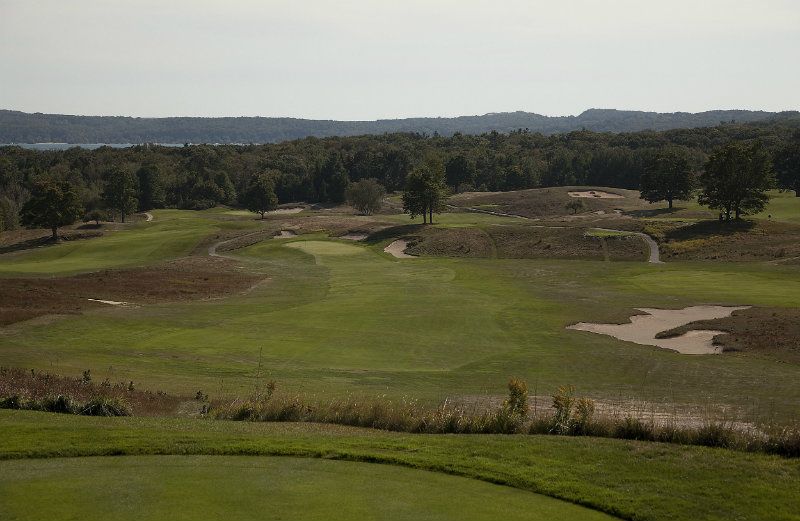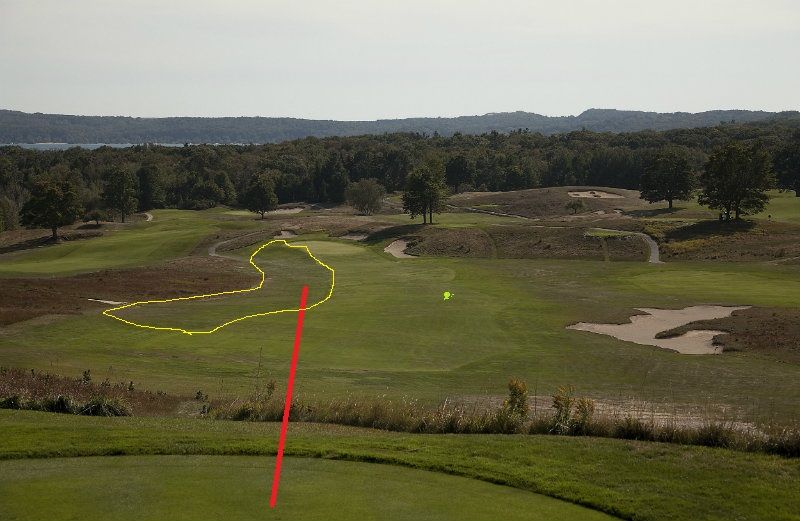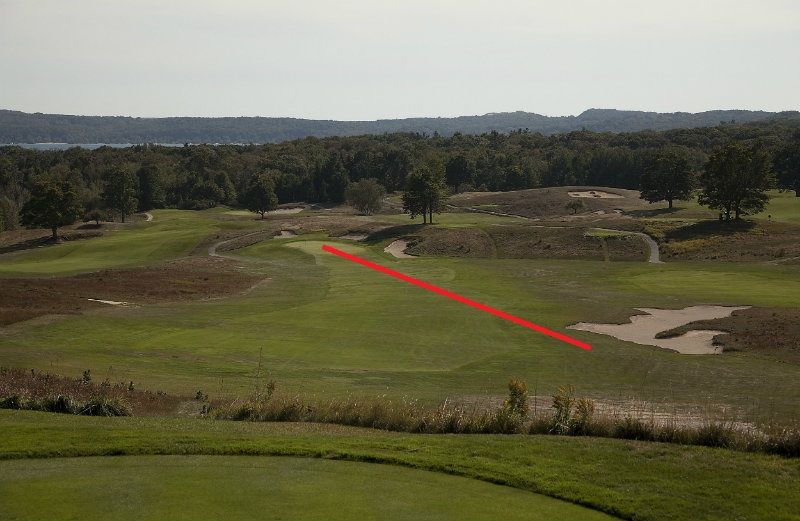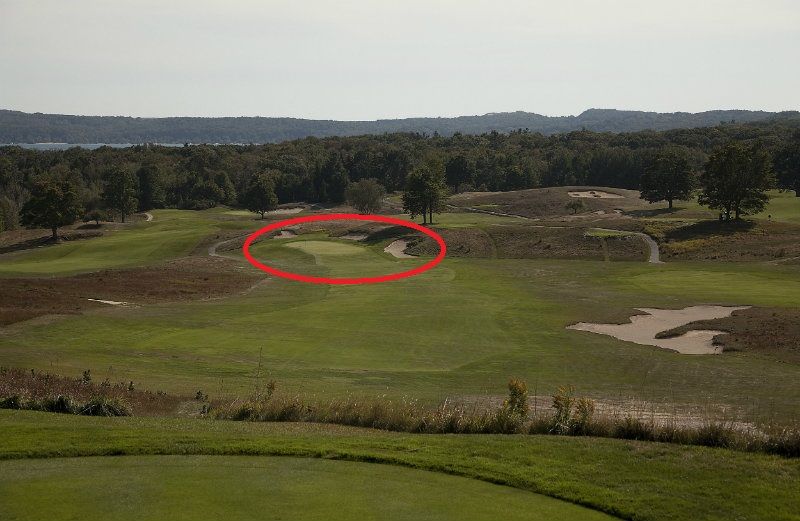While trying to wrap my mind around architectural intent and daily course presentation, I keep recalling my one round at Crystal Downs. And make no mistake about it, I thought/think The Downs is really a great golf course. However, seeing how the course is maintained does bring to my mind some questions. And to get answers and/or reach conclusions, I need some help from you guys.
For starters, here is hole one from the tee box.

And, of note, these photos were cut and pasted from Dan Moore's thread on Crystal Downs. And I added the lines and circles to those photos to illustrate the areas I have questions.
Standing there on the first tee, the most natural instinct would normally be to go right at the green. However, the rough that is grown up in that direct line would seem to dissuade people from taking that line.
 Question #1
Question #1--Do you think the architect of the golf course wanted the rough to be designed this way?
I ask this question because it seems to me that the way the fronting slope on the green and the bunkers lurking long on that line and into that angled green seems like a sucker play. It seems to me the architect might have thought to himself, "yeah, go ahead, fire right at this green. With that angle and those bunkers and slopes, if you aren't spot on...you are punished!"
But with that rough in the line, people are dissuaded from doing that. And will come out more right of that line. Which actually seems like the correct angle to approach from, as the green seems to open up.
But that brings up
question #2...Should that grass be grown up around that bunker? It seems that bunker is there to catch golfers trying to get on that perfect angle, but who've hit shots that roll out just a smidge too much.

And, finally,
question #3...with the way the greensite is maintained, does that eliminate the need to those bunkers? And also that fronting ridge? It seems all the design is negated with the long rough, which is a penalty in and of itself.

So, I guess I'm wondering if you eliminate all that rough...does the hole become better?
Without rough up the left side, you are tempted to go straight at the green.
But if short-grass surrounded that green, the bunkers become a real hazard for shots not staying on the green and shots that are short are funneling down that hill/slope to the front of the green.
And, the smart player could open up that green with a shot out to the right...but if they aren't careful, they could end up in the bunker.
Thoughts?
And could someone help with yardage to figure if these concepts are even relevant?